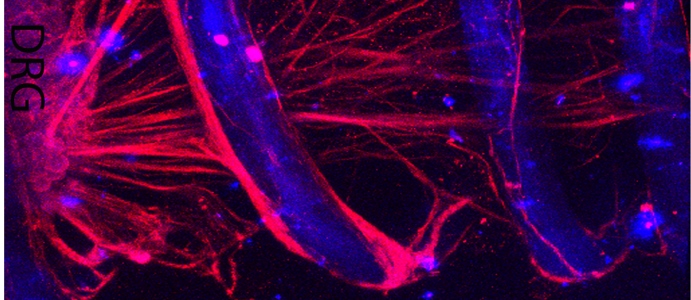News
3D printing bone tissue
Jun 28 2022
Researchers have found the ‘go’ signal to encourage nerve cell growth to repair nerve damage and spinal cord injuries in people.

Due to the scar tissue that forms after injury, a damaged spinal cord cannot repair itself naturally – the scar tissue acts as a roadblock to nerve regrowth. Paralysis below the site of the injury occurs because the electrical signals from the brain can’t get through to the body.
Scientists have been working to develop an implant which could ‘bridge’ this gap. The implants can take the form of a ‘tube’ filled with hydrogel, a bio-jelly that mimics the cells native environment.
Though these kinds of cellular highways have been made before, it has been a challenge to encourage the cells to take the on-ramp. A key signal for directing nerve cells has been missing—until now.
Getting nerves from A to B
A research team across Australia and the United States has mimicked the body’s natural way of encouraging nerve growth – with gradients of proteins called growth factors.
The researchers wrap a protein-laden coil around the hydrogel channel. More turns on the coil correspond to a higher concentration of the growth factor along the length of the channel. This enables three dimensional control of the concentration.
The growth factor gradient acts like a traffic signal to the neurons, encouraging them to grow along the channel. The team showed that nerve cells grow longer and straighter through channels with such a gradient.
Going the distance
Researcher Professor Gordon Wallace from the ARC Centre of Excellence for Electromaterials Science said the use of the growth factor chemical extends the distance nerves can regrow.
“This greatly improves the potential for regeneration through reconnection of severed nerves,” said Professor Wallace.
Co-author Professor Mario Romero-Ortega from the University of Texas at Dallas said the growth factor gradients are crucial for guiding nerves to their targets.
“Three dimensional molecular gradients in multi-channel devices have never been achieved before,” Professor Romero-Ortega said.
So promising is this technology that is has already been patented and licensed to a Texan tissue engineering company, Tissue Gen Inc.
“We are hopeful that a commercial product will be realised in the near future,” Professor Wallace said.
In the meantime the team is focused on improving the fabrication of the implants.
“That is our current challenge and we are well placed to deliver on that one!” Professor Wallace said.
The work has been accepted in Brain Research.
Pictured: The protein-laden coil wraps around the hydrogel channel. Image from Brain Research and University of Teas at Dallas.
Related:













